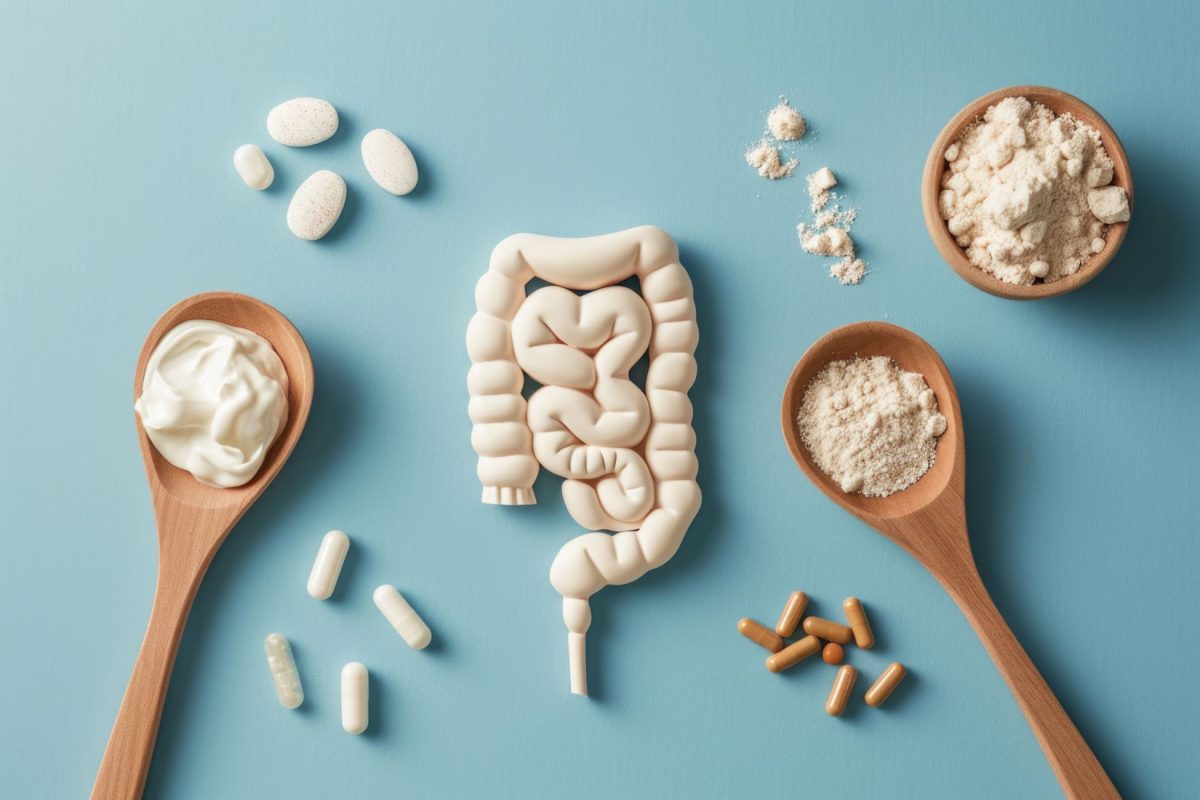Key Takeaways
-
Wheelchair users frequently desire liposuction for functional and mental reasons, including enhanced mobility, comfort, and confidence.
-
Accessible clinic spaces, examination equipment, and digital platforms must be part of equitable care for patients with mobility disabilities.
-
Staff education, compassionate conversations, and continued learning contribute to supportive, respectful care encounters for wheelchair users.
-
A comprehensive consultation process, with transparency and pre-visit preparation, establishes realistic expectations and addresses individual concerns.
-
Specialized surgical and post-operative protocols, such as safe transfer methods and accessible recovery arenas, are key to patient safety and best results.
-
Through advocacy, patient rights awareness, and community engagement, continued progress is being made to improve accessibility and inclusivity in healthcare.
Liposuction for wheelchair users: accessibility issues often come up at clinics and hospitals. Most wheelchair users encounter restrictions with building access, exam tables and knowledgeable staff.
Where clear information and support are lacking, it creates stress and less safe care. Clinics might not have lifts or adaptive equipment.
There are certainly some guidelines and best practices, but the real-world experience is different. The main body will provide more on key theme and choices.
Unique Motivations
Wheelchair users might pursue liposuction for atypical purposes. Body contouring, fat removal and increased mobility can satisfy both physical and emotional needs. For most paraplegics or other disabled individuals, shifts in body image and function result in special drives.
These might be wanting to be more comfortable, fit into clothes better and control health issues related to skin or posture. They can experience social pressure to conform to beauty ideals, or long for how their body looked prior to their injury. Each of these motivations informs how they tackle liposuction and what they wish to accomplish.
Functional Improvement
Liposuction can assist in removing fatty overburden in regions which restrict mobility or transfers due to an abundance of subcutaneous fat. For wheelchair users, a little bit less fat around the hips, thighs or abdomen can go a long way to making daily activities less cumbersome.
This can translate to easier chair to bed transitions, or less work when shifting your position. Better posture and comfort is paramount. Fat pockets can cause pressure points resulting in discomfort, fatigue or even skin irritation.
When liposuction trims these zones down, it can assist users in sitting straighter, experiencing less pain, and steering clear of pressure sores, which in turn undergirds a more active lifestyle. Others say they feel less heavy and more inclined to participate in physical activity, which can enhance self-esteem and social engagement.
There’s proven fact that disrupting fat in these high-risk zones significantly decreases the risk of skin issues, keeping users healthier over time.
Comfort and Fit
Plenty of wheelchair users complain about their clothes fitting poorly. Chunky fat in all the wrong places can make it difficult to find anything to wear that feels comfortable and looks appropriate.
Liposuction provides a means to sculpt body contours such that clothes fit better, alleviating irritation and aiding self-image. Surgical techniques can be customized to each individual’s specific contour — accounting for muscle atrophy or distortions due to trauma.
This caution is necessary for survival and for achieving the goal. Comfort increases, too, once the bulk fat is binned, relieving pressure and making marathon sitting less draining. It’s crucial for users to discuss openly what comfort means to them during consultations so that the surgery fits their actual needs.
Skin Health
Extra weight presses on the skin, which can cause redness, sores and infections. Liposuction can alleviate these dangers by suctioning fat from trouble areas.
Skin tone and texture can clear, making day-to-day maintenance simple. There’s less chafing and fewer wrinkles that keeps the itch away. Your risk of skin breakdown decreases, particularly in pressure points that bear all day.
Good aftercare is important to maintain skin wellbeing and prevent new issues. Medication and daily skin checks can make a big difference.
Navigating Clinic Barriers
Wheelchair users have a hard time getting liposuction and other health care services. These barriers tend to stem from physical spaces, inaccessible equipment, low awareness by staff, digital access gaps, and microaggressions. Tackling them can assist clinics provide improved care to all patients.
1. Physical Environment
Clinic design counts for wheelchair users. Narrow halls, cramped waiting rooms, and steep steps can prevent people from coming in or getting around. Bathrooms without handrails or tight stalls are stressful, visits become uncomfortable.
Wide doors, non-slip ramps, and obstacle-free paths aren’t simply ‘nice to have’ – they’re mandatory. Clinics, when they go to check their spaces frequently, plug the holes and do it globally. They have to, for example, ensure accessible bathrooms and halls for maneuvering.
2. Examination Equipment
Accessible exam tables and scales are important as well. If a patient can’t use the table or get weighed, their care is not complete. Adjustable tables that lower or raise at the touch of a button allow staff to accommodate a broader spectrum of patients.
Special scales that allow wheelchair users to weigh themselves without transferring are essential for precise checks. Investing in these tools can be the difference between a safe, comfortable visit and a missed diagnosis or injury!
Not all clinics can afford top-of-the-line equipment, but even simple modifications, such as portable ramps or transfer boards, can alleviate a lot of issues. In resource-light settings, innovation and attention to detail can make a big difference.
3. Staff Preparedness
Staff who are aware of mobility needs can make a world of difference. Getting staff trained on how to assist with transfers or leverage specialty devices is critical. When staff are nice and talk and listen and involve patients in decision-making, it develops trust.
Managers should lead by example by advocating for continuous, not one-time, training. As clinics are increasingly overwhelmed by staff shortages and demand, enabling learning and empathy is a win for all.
A lot of patients are aided by having someone assist with everyday burdens, as it alleviates stress while at appointments.

4. Digital Accessibility
Clinic sites have to work for all of us, with accessible text and clear navigation. Details about ramps, parking, or virtual consults sharing goes a long way in helping users plan ahead. Virtual visits can extend reach to those who cannot make it because of transport access or local violence.
Smart tech—think online forms or video calls with captions—eases the entire experience for folks with a variety of needs.
5. Unspoken Biases
Bias, even if it’s unspoken, can keep people from receiving care. Certain staff may not consider wheelchair users as good candidates for specific treatments, which restricts options. Talking publicly about disability and hearing patient narratives shatters this thinking.
Advocacy—from inside clinics as well as from patients—combats discrimination and advocates for improved care.
The Consultation Process
A thoughtful consultation for wheelchair users who want liposuction. It paves the way for security and transparency. Straight shooting, smart strategery, and care for individual wellness all count.
Pre-Visit Checklist
Begin by ensuring the clinic is barrier free — ramps, wide doors and restrooms. Schedule your transportation, seeing if they have space for your wheelchair or if a support person is necessary.
Take your entire medical history with you. Keep tabs on your weight, medications, allergies and previous surgeries. Attach anything relevant to your condition, such as recent lab results, as surgeons will require this for a comprehensive pre-op check.
These ought to include blood count, liver function and clotting profile to avoid issues such as haematomas. No smoking and hold some medicines like aspirin, clopidogrel, NSAIDs, vitamin E and some supplements at least a week prior to visit.
Check with your doc if you’re uncertain about a drug. Store measurements and photos for your reference. Organize your ride home after the consult, if you require assistance or specialized transport.
It’s smart to schedule after visit backing, as you could have additional questions or require care.
Key Questions
-
Which liposuction techniques work best for my body and needs?
-
Are there particular hazards for wheelchair users or my medical conditions?
-
What should I anticipate in terms of pain, bruising or swelling post-operatively?
-
What’s the recovery like and what are the steps?
-
What will I require at home for post-care and getting about?
-
Does the clinic staff assist with transfers or positioning on surgery day?
-
How many similar cases has your team handled?
-
What follow-up visits are necessary, and how are complications handled?
Being aware of these issues allows you to make educated decisions. It assists you identify the appropriate clinic and surgeon.
By preparing your questions in advance you make sure to capture everything during your appointment.
Assessing the Facility
As you tour, notice the design. See if the building and rooms allow you to wander. Look for adjustable exam tables, transfer aids and lifts.
These make operations safer and less anxious. Observe the waiters. Are they courteous and accommodating, or do they appear hurried or brusque?
You want a team that responds to your inquiries and gets you. Request anecdotes or testimonials from other wheelchair users who have tried the clinic. Their firsthand feedback can be more useful than brochures or online reviews.
Setting Realistic Expectations
A thorough consultation leaves you well-informed of what’s to come. The surgeon must describe the procedure, potential outcomes and complications in layman terms.
They’ll snap pics and topographic marks while you’re standing, and obtain your informed consent. Deep experience, often beyond a decade, makes surgeons better at dealing with surprises.
On surgery day, anesthesia is provided for comfort and routine follow-ups are required for optimal recovery.
Surgical and Anesthetic Safety
Liposuction wheelchair users presents special safety requirements. Everyone has varying degrees of mobility, clinics need to tailor care to the patient. The right configuration, technology, and collaboration count for secure surgery.
|
Safety Protocol |
Requirement or Equipment Example |
Why It’s Needed |
|---|---|---|
|
Accessible entry |
Wide doors, ramps |
Easy movement for wheelchairs |
|
Transfer support |
Patient lifts, slide boards |
Safe movement to surgical table |
|
Specialized tables |
Adjustable, bariatric tables |
Comfort, easier access |
|
Monitoring systems |
Vital sign monitors, pulse oximeters |
Spot problems early |
|
Blunt-tipped cannulas |
Safer surgical tools |
Lower risk of injury |
|
Tumescent/superwet technique |
Infusion pumps, fluid warming devices |
Reduce blood loss, safer |
|
Compression garments |
Post-op compression dressing |
Minimize swelling, bruising |
Operating Room Setup
Convenient OR design isn’t merely ensuring a wheelchair can pass through the doorway. We need enough room for walkers, nurses and machinery. Wheelchair riders might have to have some aids nearby, so free paths and open plans are important.
Specialized surgical tables, like adjustable-height or bariatric models, accommodate various body types and ease transfers. This lowers danger and preserves patient respect.
Surgeons and anesthesiologists collaborate, exchanging details on the patient’s movement requirements, to strategize safe positioning and monitoring in liposuction.
Anesthesia Nuances
Wheelchair users require anesthesia plans which accommodate their specific health and mobility. Anything can affect how their body processes anesthesia — muscle tone, old injuries or conditions.
Tumescent anesthesia, in which a dilute solution with lidocaine and epinephrine is injected into tissue, reduces blood loss and decreases the risk of systemic toxicity. Klein’s tumescent technique has even rendered large-volume liposuction (greater than 3 liters) safer by keeping blood loss low.
The dry technique, which omits fluid infusion, can result in substantially greater blood loss—approximately 25–40% of the extracted fat’s volume. For safety, superwet anesthesia, which employs more fluid, is a superior choice for larger operations.
Post-operative, pain control and rapid convalescence count. Disabled folks may have a different pain threshold or reaction, so care teams should communicate with them and discover what’s most effective.
Contour irregularities are the most frequent complication after surgery, occurring in approximately 2.7% of cases. Although less common, abdominal and bowel perforations are serious and make up 14.6% of fatal cases.
Transfer Protocols
Safe transfers are a necessity for wheelchair users. Patient lifts, slide boards and other aids assist in transferring individuals from their wheelchair to the surgical table safely. Employees must be trained to utilize these instruments and treat patients carefully.
Every clinic should develop transfer plans that are customized for each individual’s physique and requirements. A checklist for every step can lower risk.
It’s handy to have reserve personnel available in case the unforeseen arises.
Post-Procedure Recovery
Post-procedure recovery for wheelchair bound liposuction patients requires a personalized strategy. Special obstacles, from pain control to extended attention, demand transparent strategizing and robust aid.
|
Aspect |
Needs & Options |
|---|---|
|
Pain Management |
Ice packs, prescribed medication, gentle elevation, accessible call buttons |
|
Wound Care |
Easy-to-reach dressing supplies, regular visual checks, sterile environments |
|
Mobility Assistance |
Transfer boards, gait belts, adjustable beds, adaptive wheelchairs |
|
Physical Therapy |
Onsite therapists, home visits, accessible therapy equipment |
|
Emotional Support |
Peer groups, counseling, virtual communities |
|
Follow-Up Care |
Accessible transport to clinics, telemedicine, regular health checks |
|
Accessible Recovery Area |
Barrier-free entry, wide doorways, height-adjustable beds, non-slip flooring |
|
Long-Term Support |
Ongoing rehab, access to support groups, home care services |
Specialized Care
Frequent assessment of skin integrity to avoid pressure sores is crucial. Use of compression garments designed for wheelchair users is also important. Administration of prescribed pain medications as needed should be monitored closely.
Scheduled lymphatic drainage massages can significantly aid recovery. Early involvement of physical therapists ensures that patients start rehabilitation promptly. Regular wound checks by nursing staff help maintain a sterile environment and prevent complications.
Lymphatic drainage massages are important post-surgery because they encourage the movement of this extra fluid out of the tissues and accelerate the decrease of swelling. This massage can be done by a therapist or, if guided, at home with soft, sweeping movements.
For wheelchair users, swelling tends to hang around longer due to not getting as much movement, so this therapy is more critical. Physical therapy factors in big time as well. Therapists can help you design safe post-operative routines that enhance strength and flexibility without stressing operated areas.
Even minor modifications, such as seated stretches or assisted limb extensions, can enable patients to maintain mobility during the healing process. With so many medical teams involved—surgeons, nurses, therapists—it’s critical that they share updates and coordinate care so nothing slips through the cracks.
Mobility Adjustments
-
Assess home layout for clear, wide pathways.
-
Arrange convenient recovery areas, such as reclining beds close to bathrooms.
-
Use transfer aids such as boards or slings.
-
Consult with occupational therapists about adaptive tools.
You have to step-wise return to your daily activities. Exercise should begin slowly, typically after two or three weeks. Others can return to desk work in a few days, but exerting activities must wait. Listening to your body avoids backsliding.
Straight, truthful conversations with care teams about any fresh pain, swelling or difficulty moving identifies problems quickly. Adaptive equipment—such as specialized, extra-supportive cushions or adjustable chairs—can help make movement easier and decrease strain.
Long-Term Results
This procedure can aid in reshaping areas of the body; however, the end appearance can take months. Swelling can persist up to the 12th week and skin tightness recovers gradually. Staying active and eating well maintain results.
Support groups, online or in person, provide a venue to exchange advice and discuss frustrations. They can go a long way in spirit and inspiration.
Open, ongoing conversations around body image and self-acceptance are important. Such discussions can assist patients to feel positive about their progress and adapt to change.
Advocating for Change
Advocating for access in healthcare is being the voice so patients of all types, including wheelchair users, are able to receive safe and equitable care. A lot of folks recognize that real change in body acceptance and healthcare has to be much more than slogan or trend.
It requires continued efforts by patients, advocacy groups, clinics and communities to enact meaningful, sustained change.
Patient Rights
We deserve accessible healthcare that addresses our specific needs as wheelchair users. This means physical access to clinics, clear communication, and respectful treatment throughout all stages of care.
Occasionally, clinics forget these rights, and it becomes difficult to receive quality care. Informed consent is everything in surgery. Every patient deserves complete information on risks and benefits and alternatives, in order to make a decision.
This empowers wheelchair users to make choices that suit their lifestyle and health requirements. The one thing I want out of this book is for patients to speak up during visits and request explanations in a language they understand.
Clinics need to be transparent about their accessibility policies, so patients know what to expect and can keep providers accountable.
Insurance Navigation
Insurance can be an obstacle for wheelchair users looking for liposuction, particularly when they cover these procedures under the label “cosmetic.” It is important to read the fine print: some policies may cover surgery if it’s tied to medical needs, like skin problems or chronic pain.
Fighting for coverage is hard but doable. Patients should gather documentation, such as doctor’s notes, and clearly articulate the need for the surgery. Financial counseling can assist by identifying payment plans or assisting with appeals.
It can be a lengthy process, but when patients know the rules and have the support, it can be simpler to advocate for fair coverage.
Fostering Inclusivity
Liposuction clinics have to have definite plans for receiving everyone. That might be ramps, adjustable exam tables, or training staff to appreciate different mobility requirements.
A supportive clinic honors every patient — no matter where they come from or their body size. Patient response is key. Comment boxes, online surveys or open forums can help clinics learn what’s working and what needs fixing.
Community groups frequently partner with clinics to demonstrate areas in need of transformation, and their voices assist in advocating for improved access. When clinics hear and respond, it inspires genuine change.
Conclusion
Liposuction may provide a genuine option for wheelchair users to contour their bodies or enhance physical comfort. Many encounter hard stops at clinic doors – steps, small lifts, or staff who don’t know much about their needs. Safety checks and straight talks with docs really help establish clear plans. Recovery requires well-being and assistance and every step can feel more challenging with less access to ramps or rest stops. Real change requires both clinics and the broader health sector to dismantle entrenched behaviors and construct equitable environments. To assist in advocating for improved care, contribute your experience or request facilities to enhance their accessibility. Each voice can help crack open new doors for everyone.
Frequently Asked Questions
What unique challenges do wheelchair users face when seeking liposuction?
Wheelchair users frequently face such obstacles as clinics, examination tables, and equipment that are not accessible. These issues can render both consultation and treatment complicated without thoughtful foresight.
Are all clinics equipped to handle liposuction for wheelchair users?
No, not all clinics are wheelchair accessible. Opt for a clinic with accessible facilities, staff trained in disability care, and experience treating wheelchair users.
What should wheelchair users expect during the consultation process?
At consultation, doctors go over medical history, mobility requirements, and individual objectives. Being upfront about your specific needs goes a long way in making the procedure as safe and comfortable as possible.
Is liposuction safe for wheelchair users?
Liposuction is safe, but it’s dependent on your health and mobility. A comprehensive health review by a seasoned surgical team is important to reduce risk.
How does recovery after liposuction differ for wheelchair users?
Recovery can be prolonged for wheelchair users. Mobility issues can impact wound and physical therapy. Caregiver support and a customized recovery plan are key.
What can wheelchair users do to advocate for better access to cosmetic procedures?
Wheelchair users may leave reviews for clinics, support accessibility campaigns, and link up with disability organizations. At least the awareness raises hell for inclusive care at hospitals.
Why consider liposuction when using a wheelchair?
Certain wheelchair riders demand liposuction for their solace, well-being or vanity. Everyone’s reasons for wanting the procedure are different, and having a discussion about your goals with an experienced surgeon will ascertain if you are a good candidate.



















